Cerca per articoli, rubriche o altro
cerca per rubrica

Cerca per articoli, rubriche o altro

Nel 2012, un articolo pubblicato da due archeologi rivela i risultati di una serie di esperimenti sonori condotti nella gola La Valltorta a Valencia, in Spagna: sito famoso per la presenza di pitture rupestri dipinte dai nostri antenati migliaia di anni fa. Dai risultati è emerso che la scelta delle aree in cui realizzare i dipinti fu dettata dalla sonorità: ripari rocciosi dove il riverbero della voce umana risulta più forte sono caratterizzati da un maggior numero di dipinti.
Forse la gente cantava o applaudiva in modo rituale attorno a questi disegni, celebrando l'abbondanza dei territori di caccia locali. O forse all'artista piaceva semplicemente canticchiare mentre lavorava, circondato da pareti di pietra capaci di riflettere la sua voce.
Il suono e il suo riverbero sono da sempre temi centrali del progetto e l’emergente campo dell’archeoacustica non fa confermare la loro importanza.
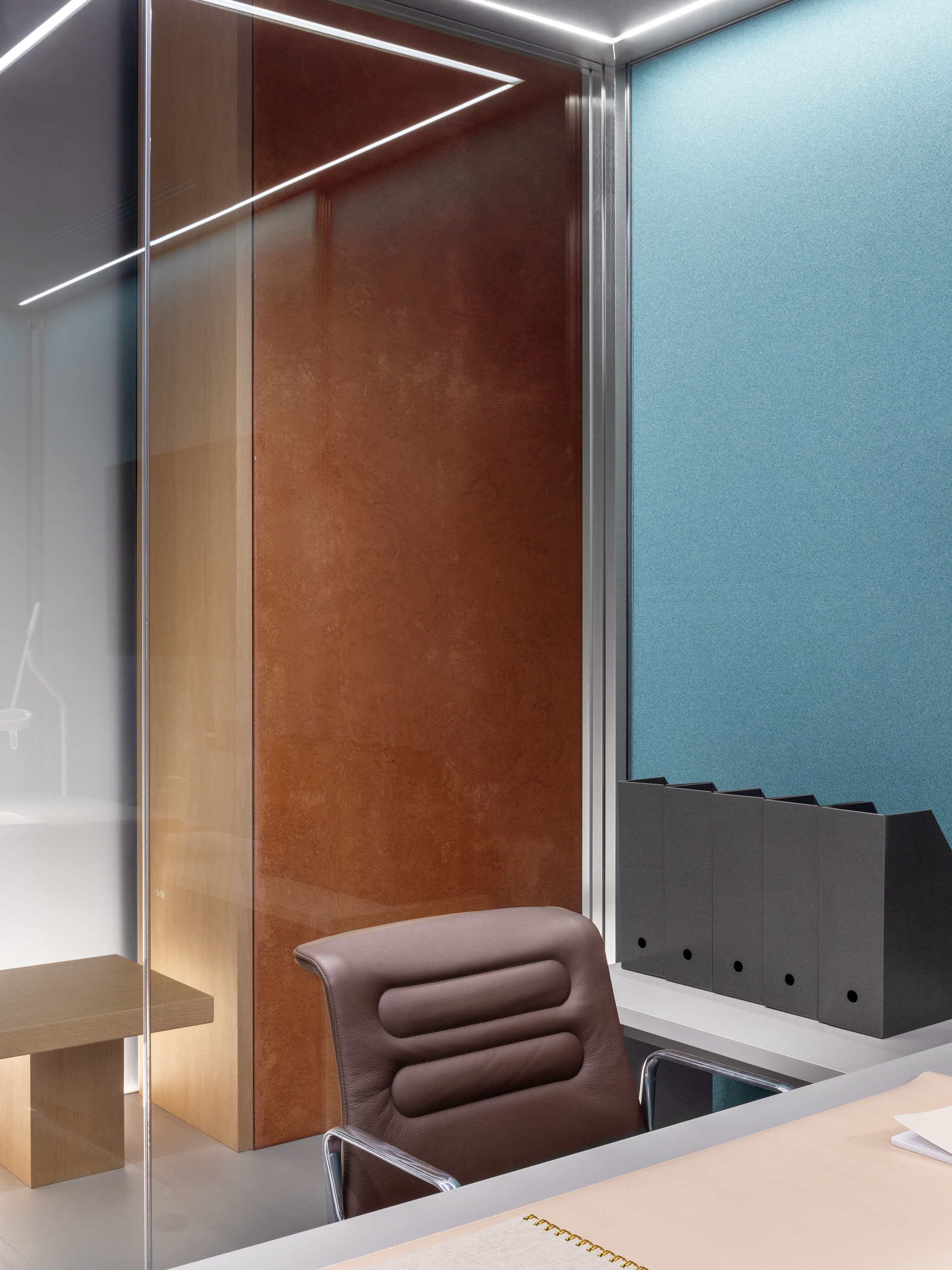 Detail of CSS_VILLAGE, the modular system of self-supporting acoustic boxes - ph. Alessandro Saletta – DSL Studio
Detail of CSS_VILLAGE, the modular system of self-supporting acoustic boxes - ph. Alessandro Saletta – DSL Studio
Questo forse implica che la gestione del suono all'interno di uno spazio faccia parte della nostra civiltà da molto più tempo di quanto immaginassimo. Le sue applicazioni sono state estremamente varie: man mano che i requisiti per i nostri spazi di lavoro e di svago sono cambiati, il design e la tecnologia hanno dovuto tenere il passo. Il filo conduttore dell'acustica architettonica passa dai rifugi rupestri ai pannelli acustici high-tech sviluppati da Citterio, azienda italiana del Gruppo Molteni, che realizza partizioni modulari appositamente progettate per assorbire il suono e creare ambienti ideali per il lavoro creativo.
Tuttavia, sebbene la tecnologia contemporanea di Citterio si basi su una lunga storia di ingegneria del suono attraverso l’architettura e il design, va anche contro gran parte del trattamento storico del suono nello spazio – una storia che ha spesso enfatizzato l’amplificazione del suono piuttosto che il suo assorbimento. La gola La Valltorta è un esempio di questo fenomeno, così come lo è anche il teatro di Epidauro in Grecia, da sempre riconosciuto come luogo con ottime performance acustiche. Nel IV secolo a.C., gli architetti crearono un teatro su più livelli in cui gli artisti potessero far sentire la propria voce a 14.000 spettatori. La leggenda narra che ogni spettatore riuscisse a sentire un fiammifero accendersi sul palco da qualsiasi posto del teatro. Tuttavia, quando gli studenti dell'Università di Tecnologia di Eindhoven hanno utilizzato dei microfoni per verificare il fenomeno, hanno scoperto che, in realtà, per sentire è necessario essere seduti abbastanza vicini al palcoscenico.
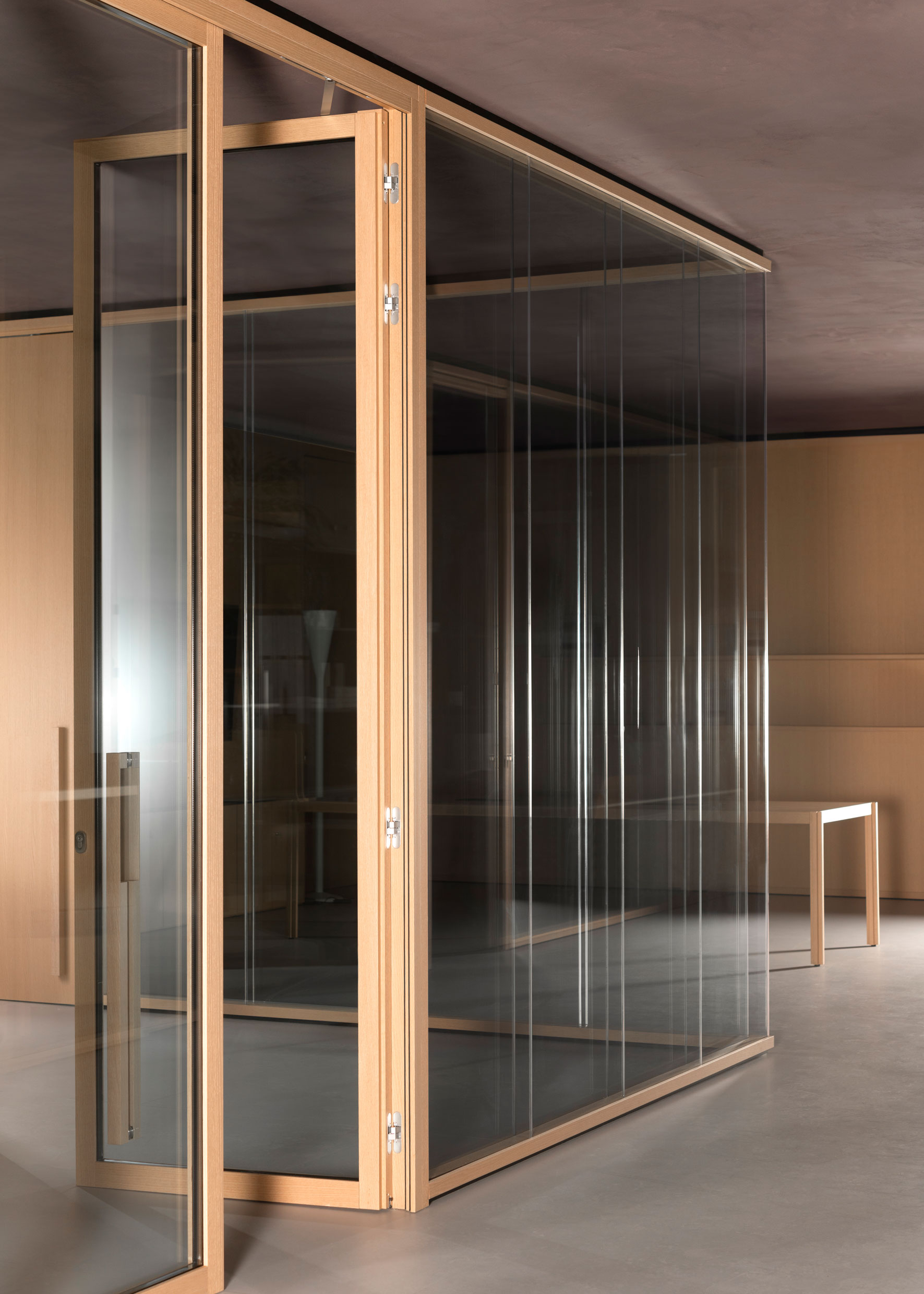 Wood Wall 105mm. Detail of the hinged door – ph. Daniela Trost
Wood Wall 105mm. Detail of the hinged door – ph. Daniela Trost
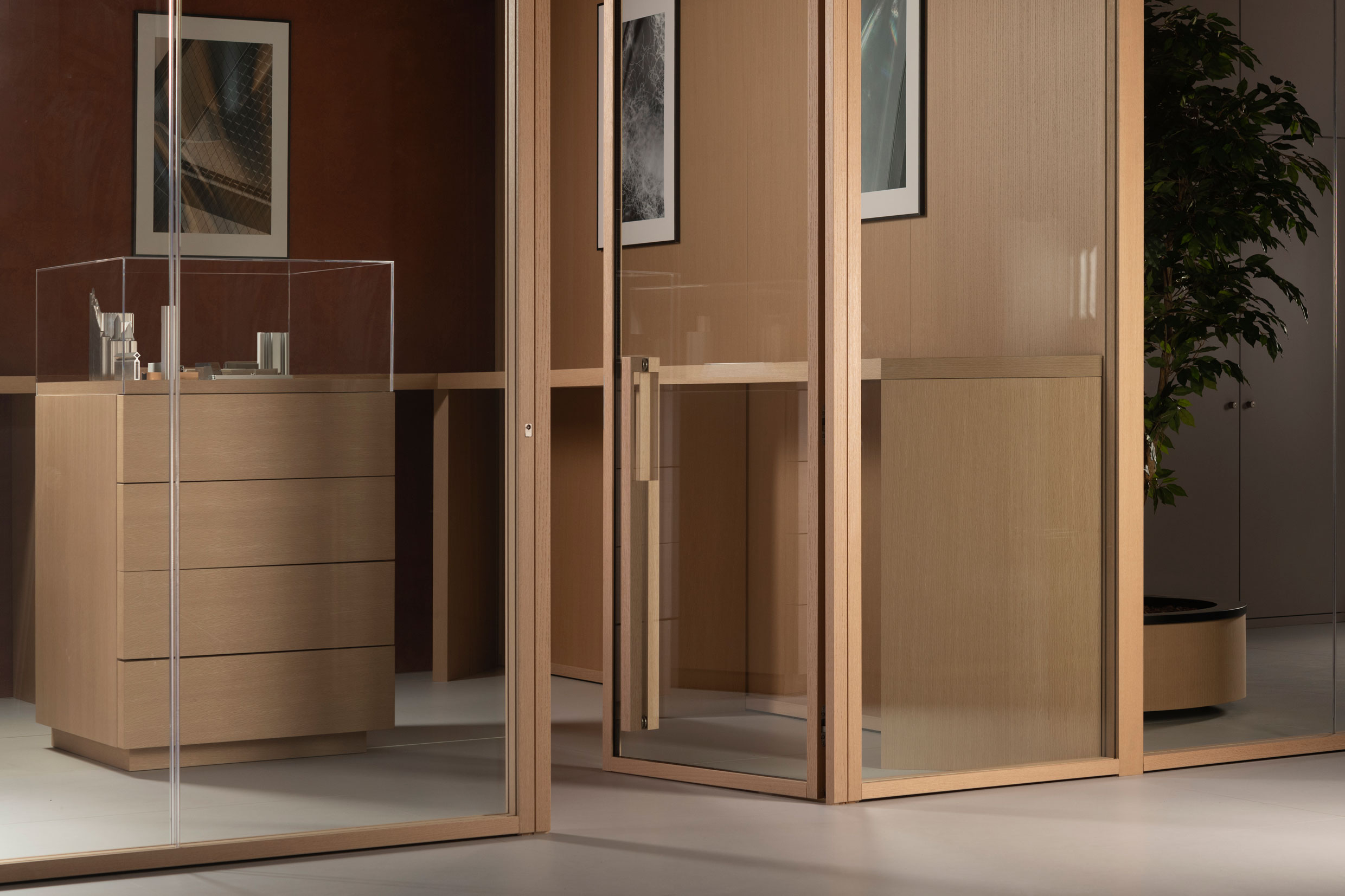 Detail of Wood Wall partition system in the new version of 105mm deep – ph. Daniela Trost
Detail of Wood Wall partition system in the new version of 105mm deep – ph. Daniela Trost
Battendo le mani davanti al Tempio di Kukulcán, il grandioso edificio a gradoni dell'antica città messicana di Chichen Itza, un suono acuto si propaga lungo la roccia. Nel 600 d.C., gli architetti progettarono appositamente questo effetto sonoro per imitare il richiamo del quetzal, un uccello considerato sacro dai Maya.
Oppure, sussurrando da un lato della Whispering Gallery della Cattedrale di St. Paul a Londra, in Inghilterra, è possibile far propagare la propria voce attraverso la pietra fino all’altro lato della cupola. Questo fenomeno ha portato alla scoperta della onde “whispering gallery” da parte di Lord Rayleight alla fine del XX secolo.
La storia è piena di importanti architetture che giocano con l’amplificazione del suono. Tuttavia, mentre gli architetti hanno sempre saputo come far propagare e risuonare il suono in uno spazio, affrontare il tema dell’inquinamento acustico e limitarlo è una questione molto più moderna. Sentire suoni, sussurri e applausi può funzionare per i luoghi di culto e di celebrazione, ma è l’ultima cosa che si desidera in un luogo di lavoro moderno.
Nel 1895, Wallace Sabine, docente di fisica dell’Università di Harvard, dovette affrontare questo problema. Una delle aule della scuola era inutilizzabile per l’insegnamento a causa del riverbero presente nello spazio - tempo in cui il suono perdura oltre la sua produzione originaria - che rendeva le lezioni incomprensibili. Incaricato di risolvere il problema, Sabine eseguì migliaia di esperimenti con diversi materiali fonoassorbenti al fine di testare la loro capacità di attenuare il riverbero, lavorando di notte, mentre il resto del campus era avvolto dal silenzio. Utilizzò i cuscini di tessuto rosso dei sedili del teatro dell’università, raggruppandoli per verificarne gli effetti fonoassorbenti.
Il risultato fu l’equazione di Sabine, una formula utilizzata per calcolare il tempo necessario affinché un suono svanisca in una stanza, ovvero il tempo di riverbero. Sabine è passato alla storia come il fondatore dell'acustica architettonica e il Sabin, un'unità di misura dell'assorbimento acustico, porta ancora il suo nome.
Ma il lavoro di Sabine non è stato solo teorico: ha aiutato attivamente gli architetti a progettare gli spazi in modo più efficace. Quando i progettisti della chiesa di St. Thomas a New York si trovarono di fronte a un problema di acustica, si rivolsero a lui per un parere.
Sebbene desiderassero realizzare una grandiosa cattedrale neogotica, il riverbero creato dal suono che rimbalzava sulla sua pietra – ideale per i cori e per la messa pronunciata in latino – avrebbe reso confuse le parole dei sermoni protestanti. Per questo motivo, Sabine collaborò con Rafael Guastavino, un ingegnere edile spagnolo, per creare la piastrella Rumford. Mescolando e riscaldando l'argilla con la torba, realizzarono una piastrella porosa in grado di assorbire il suono. L'architettura poteva essere allo stesso tempo imponente e grandiosa, ma comunque funzionale alla comunicazione.
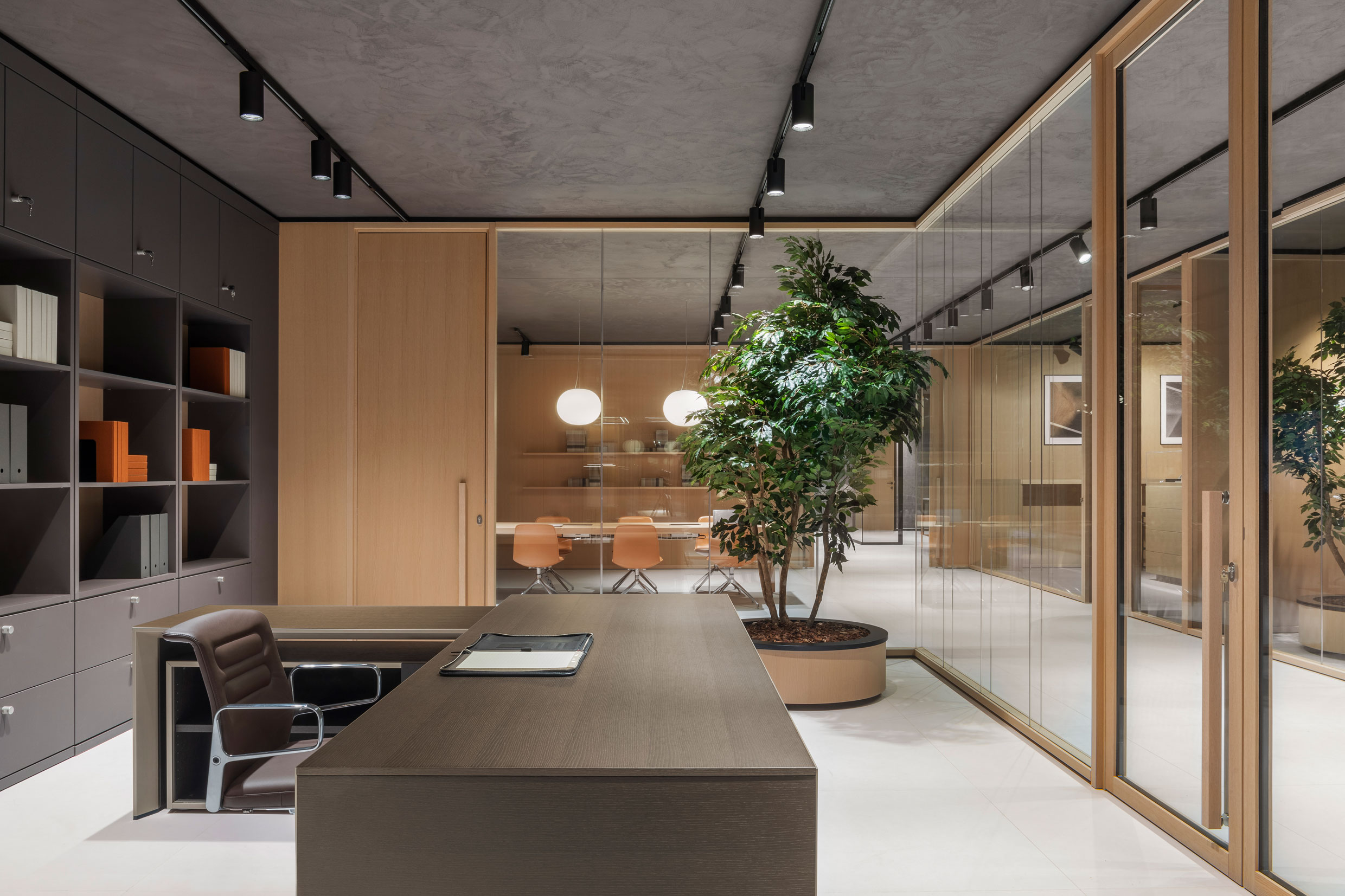
Nel XX secolo, queste idee furono portate ulteriormente avanti, man mano che la quotidianità diveniva significativamente più rumorosa. Le automobili sostituirono le carrozze trainate da cavalli, gli aerei iniziarono a rombare nel cielo e i mezzi pubblici iniziarono a trasportare rumorosamente le persone al lavoro. E anche lì il silenzio era assente.
Nel 1906, 13 anni prima della morte di Sabine, l'architetto Frank Lloyd Wright disegnò il primo ufficio open space a Buffalo, nello stato di New York. Il Larkin Administration Building fu progettato al pari di un reparto produzione di una fabbrica, con mobili per ufficio in metallo. La magnesite, un minerale con grandi proprietà di assorbimento acustico, venne importata dalla Grecia e utilizzata ovunque nell'edificio, dai pavimenti alle scrivanie. Anche se negli anni '40 la Larkin Company era in fase di declino (la sede centrale fu successivamente demolita), in Europa l'idea degli uffici open space era ormai decollata, con una configurazione non gerarchica degli spazi che faceva appello agli ideali di socialdemocrazia del dopoguerra.
Tuttavia, l'eliminazione del tradizionale ufficio direzionale creò una nuova sfida: gestire il rumore di molte persone che conversavano e scrivevano senza alcuna barriera per attutire i suoni.
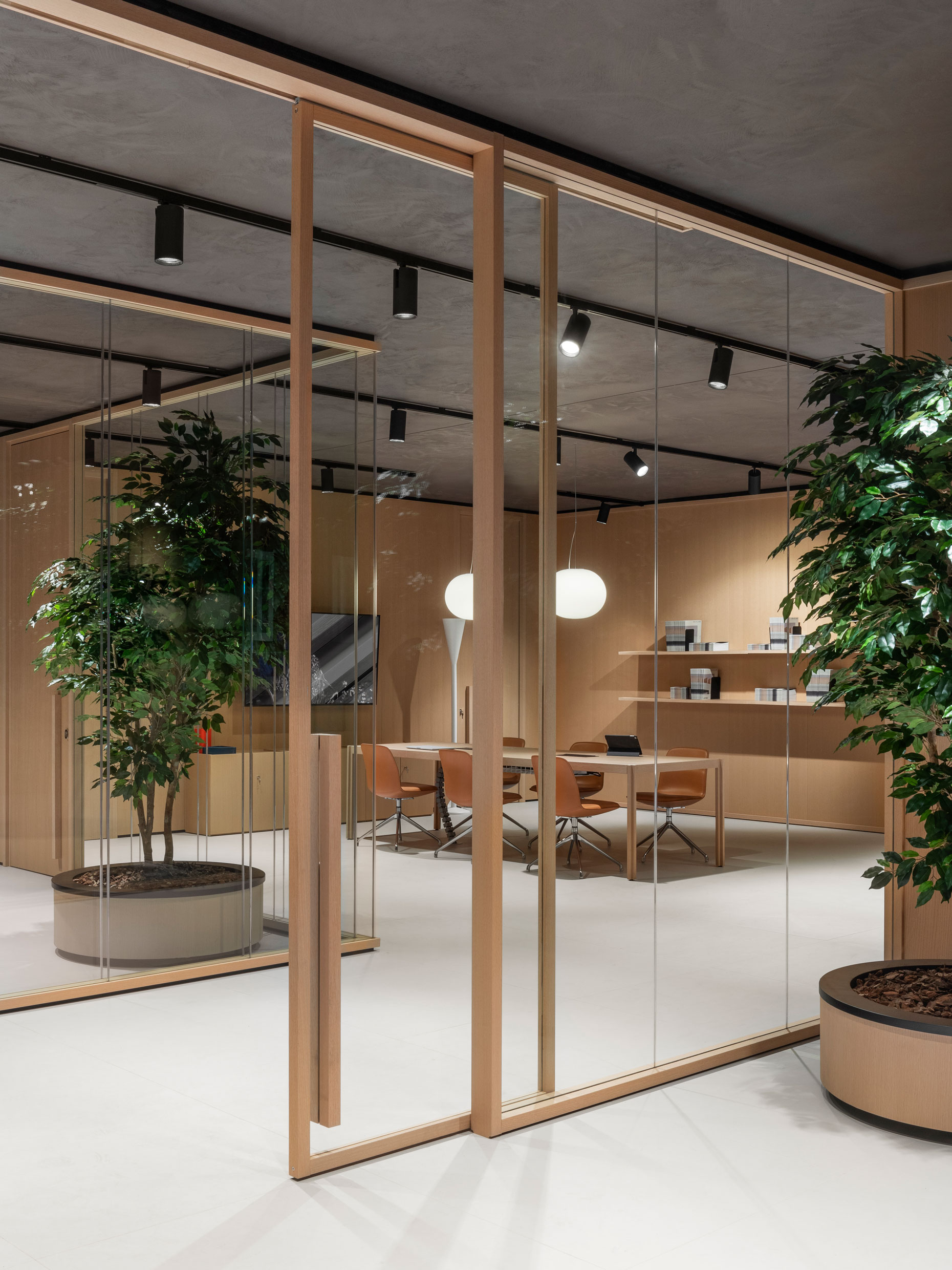 Wood Wall partition system with sliding doors overlooking a meeting area - ph. Alessandro Saletta – DSL Studio
Wood Wall partition system with sliding doors overlooking a meeting area - ph. Alessandro Saletta – DSL Studio
Citterio è stata fondata nel 1958 e, nel corso della sua storia, ha fatto molto per affrontare il problema dell'inquinamento acustico che disturba i luoghi di lavoro open space. Il “comfort acustico” è considerato fulcro dell’ambiente ufficio contemporaneo. Poiché il riverbero provoca disagio negli spazi chiusi, i progettisti di Citterio hanno applicato le tecniche di ingegneria acustica per modificare i materiali per uffici in modo che possano assorbire i rumori indesiderati, anziché rimbalzarli nello spazio e causare disturbo.
Questa è stata la preoccupazione di Citterio per decenni ed ha portato alla progettazione del Citterio Sound System, o C-SS. Composto da pareti divisorie formate da tessuto in poliestere ad alta tecnologia su supporto in particelle di legno con telai in alluminio, C-SS può essere modificato per creare zone silenziose e di privacy all'interno di uffici open space vivaci e rumorosi. La sua applicazione più diffusa è per le sale riunioni, dove è importante che i partecipanti possano ascoltarsi senza distrazioni e che le conversazioni rimangano private. Ma C-SS ha molteplici usi: dalla creazione di sale relax per momenti di tranquillità nelle giornate di lavoro, alle sale lettura per lo studio.
La progettazione acustica ha fatto molta strada nel tempo e nello spazio, dagli antichi anfiteatri progettati per amplificare il suono attraverso il riverbero, ai cuscini di Sabine utilizzati per smorzare i suoni indesiderati in un'aula magna della Ivy League. C-SS fa parte di questa storia, rappresentando la ricerca che ha portato alla creazione di prodotti per l'ufficio in grado di configurare aree di gestione del suono che rappresentano migliaia di anni di progresso tecnologico e, al tempo stesso, ricordano le sporgenze rocciose che riparavano gli artisti preistorici della gola La Valltorta mentre realizzavano le loro creazioni in perfetta risonanza.
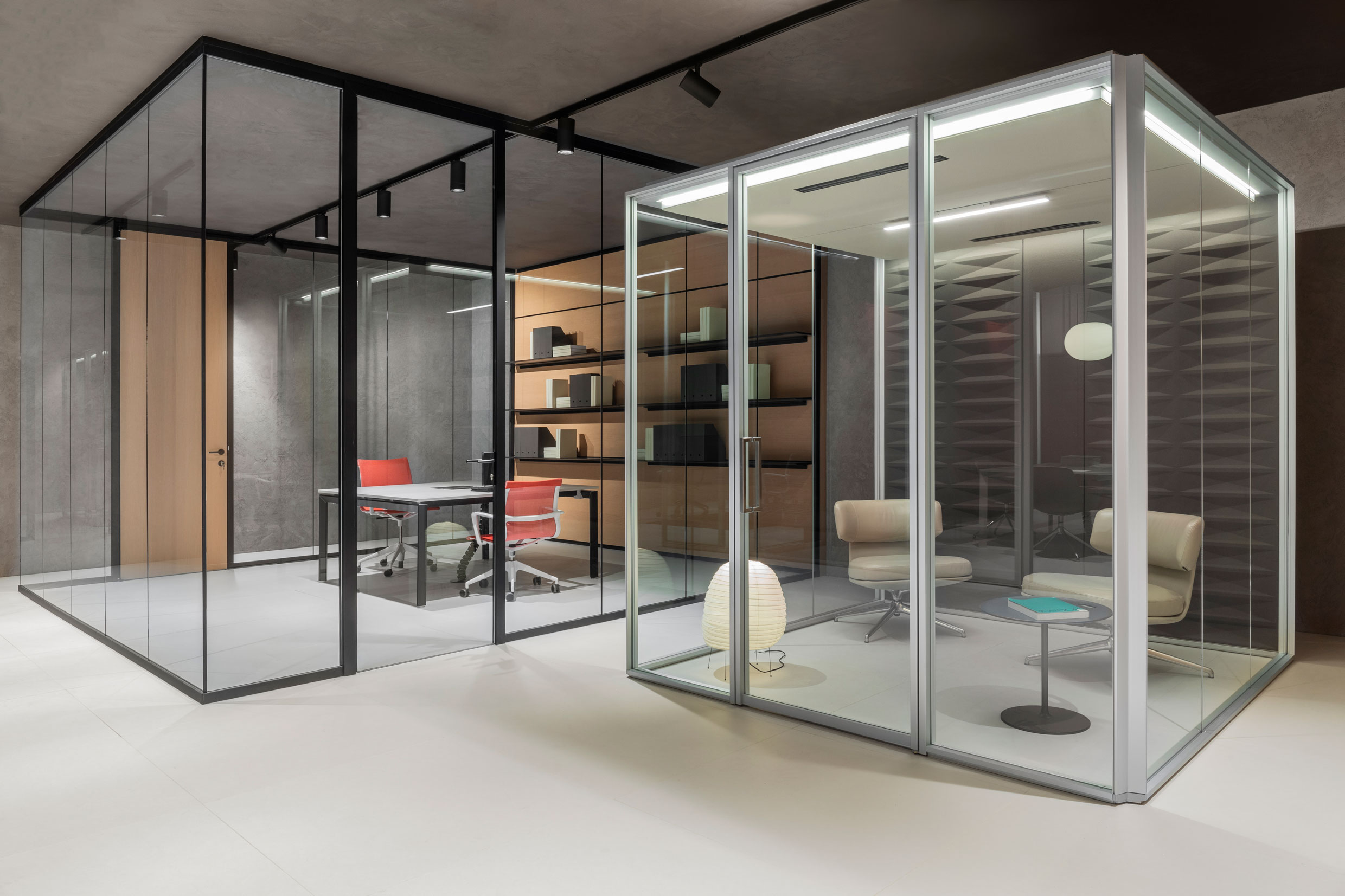 View of a private office with Basic partition system. Next, C-SS acoustic box - ph. Alessandro Saletta – DSL Studio
View of a private office with Basic partition system. Next, C-SS acoustic box - ph. Alessandro Saletta – DSL Studio
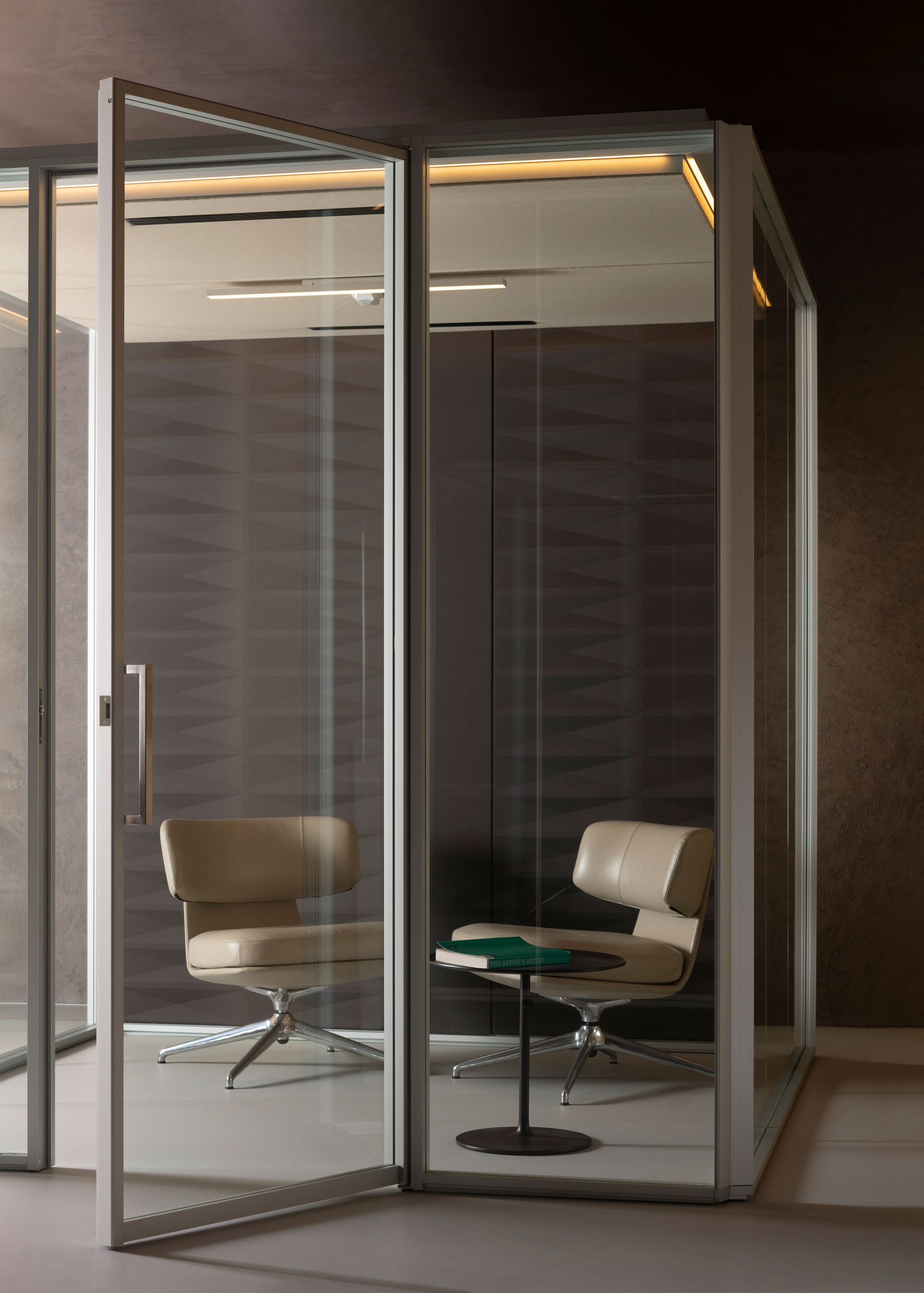 C-SS acoustic box with sound-absorbing panels – ph. Daniela Trost
C-SS acoustic box with sound-absorbing panels – ph. Daniela Trost
Main image: Main entrance of the Citterio showroom – ph. Alessandro Saletta – DSL Studio
Herzog & de Meuron per UniFor a Milano
Un programma artistico per allacciare un legame tra il passato e il presente della città di Pompei.
Il nuovo edificio della Axel Springer a Berlino ospita giornalisti e guru della tecnica, redattori e programmatori.
Grazie per esserti registrato.